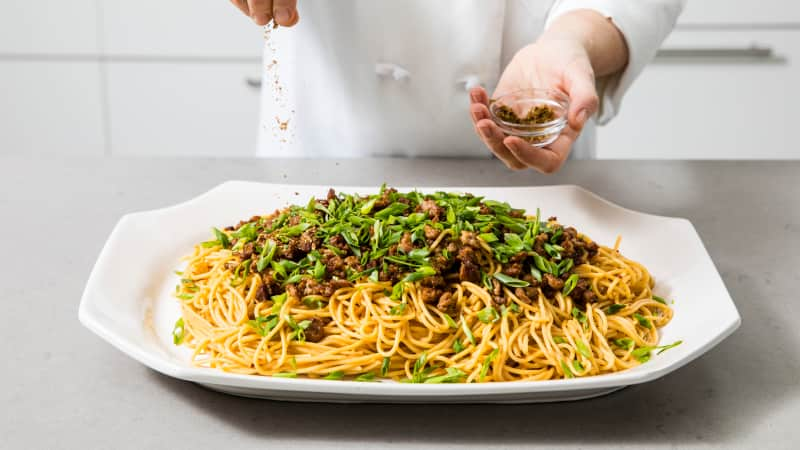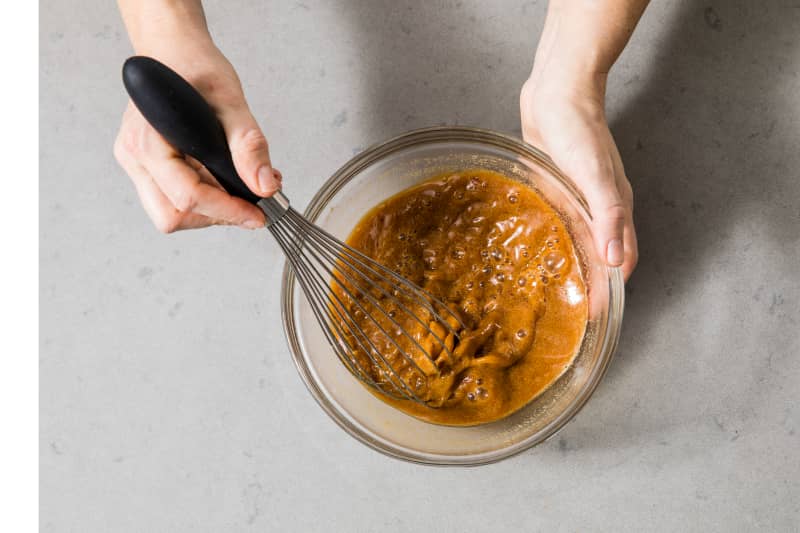When my editors asked me to develop a recipe for Chinese-style sesame noodles, I knew exactly which dish I wanted to use for inspiration: dan dan noodles. The first time I had these noodles (at an unassuming Sichuan restaurant near Boston), they opened up flavor possibilities I didn't even know existed. They were tossed with a lively, bright-red chili oil but had a tempered spiciness that was enhanced and balanced with scallion, toasted sesame oil, meaty soy sauce, tangy vinegar, and pleasantly numbing Sichuan peppercorns. The noodles were also dotted with little bits of supersavory minced pork. I ordered a second bowl before I finished the first.
An Easy, Spicy Noodle Supper
Published Mar. 4, 2019.

Sign up for the Cook's Country Dinner Tonight newsletter
10 ingredients. 45 minutes. Quick, easy, and fresh weeknight recipes.
For a home-cooked version of these noodles, I decided that my goal would not be to create an exact replica of an authentic Sichuan dish. Rather, I would develop a delicious, foolproof recipe that was true to the essential idea of the original but didn't require hard-to-find ingredients or a wok.
Hot Sesame Noodles with Pork
Our optional homemade chili oil adds irresistible heat and depth to these knockout noodles.Traditional dan dan noodles have four primary components: thin, long, soft noodles; a complex sauce; a topping of salty-sweet-savory minced pork; and a punch of heat. (They usually also include pickled mustard greens, which would be too time-consuming for my weeknight goal.) For a similarly shaped but commonly available noodle, I started with plain old spaghetti cooked beyond al dente until fully tender.
Using ground pork for the topping was a no-brainer, and to enhance its flavor, I knew I'd use hoisin and soy sauces. But many recipes also call for Chinese rice wine, which can be hard to find. Luckily, we've had good results substituting dry sherry for rice wine in other recipes, and it worked great here, too. With a pound of spaghetti setting the baseline, I found that 8 ounces of pork was the right amount; the heavily seasoned pork is an accent here, not the star.
For the heart of my rich sesame sauce, a combination of toasted sesame oil and tahini (sesame paste) worked great. To achieve bold but balanced heat traditionally provided by dried Sichuan chiles, I used a combination of crushed red pepper flakes—sautéed in oil with scallion whites and garlic to bloom their flavor—and Asian chili-garlic sauce. A little rice vinegar added brightness and spark. A sprinkling of ground Sichuan peppercorns, which have a heady citrusy aroma and a mild numbing effect, imparted the signature lip-tingling sensation that's characteristic of much Sichuan cuisine. (Don't worry if you can't find them and don't want to mail-order—the dish is still great without them.)






As I was putting the finishing touches on the recipe, I was happy to see that the noodles were becoming so popular in the test kitchen that I could hardly save any for myself. Luckily, I now had a simple recipe that was fast enough for me to whip up my own batch—no sharing—as soon as I got home.
